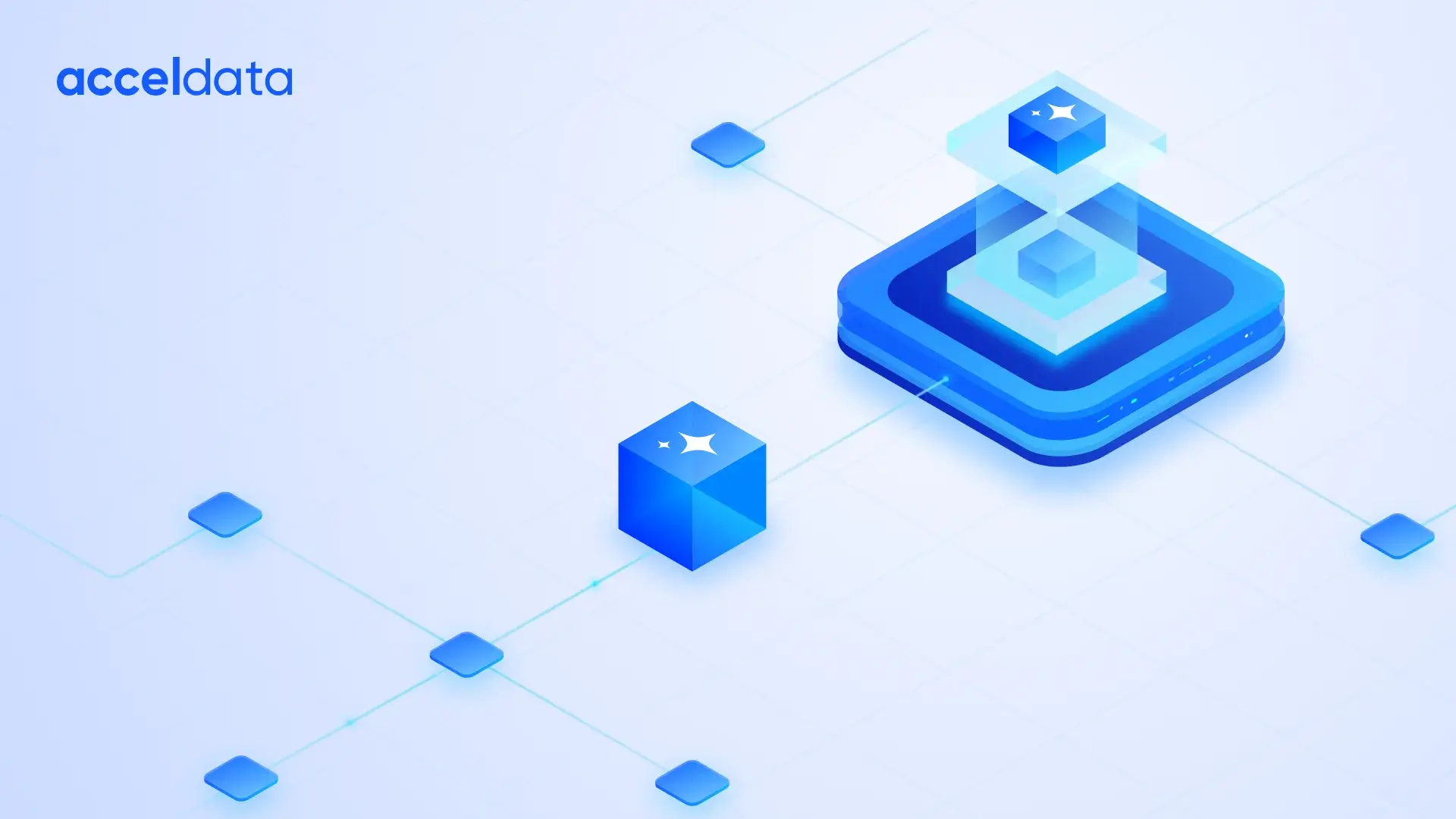Data observability is the ability to understand, track, and manage the health and quality of data within an organization's systems using data observability tools. It allows businesses to identify and resolve data issues before they spiral, ensuring smooth operations and better decision-making.
The process has become more powerful with the integration of AI in data observability. AI enhances data observability by automating monitoring tasks, rapidly detecting anomalies, and predicting potential issues before they impact the business. This is made possible through advanced AI observability platforms. Such automation enables companies to optimise data management in real-time, preventing costly errors and improving overall efficiency. AI is no longer a futuristic tool, but an essential component of data observability strategies across industries.
Ensuring data quality and cost efficiency has become a critical priority for modern businesses. High-quality data leads to better decision-making, while optimized cost management ensures resources are used efficiently. Businesses can address both these concerns simultaneously through AI-driven data observability.
Corporate investment in AI surged 13-fold over the last decade, with global AI investments reaching record levels in 2022, indicating rapid adoption of AI across industries. This trend is reflective of AI's increasing role in transforming data practices across sectors, including healthcare, finance, and retail.
Evolution of Data Observability
Traditionally, data observability has relied significantly on manual monitoring, rule-based systems, and reactive approaches. Data teams would often be informed of issues only after their occurrence, leading to delays in the detection of errors or anomalies. This approach was limited by human capacity, slow response times, and a lack of real-time insights, which made it challenging to maintain data accuracy and efficiency.
In contrast, AI observability platforms offer a proactive, automated approach. AI can continuously monitor data pipelines in real time, instantly detect anomalies, and predict potential issues through machine learning and advanced algorithms, thus enhancing overall data observability. Unlike traditional methods, AI-driven solutions break down data silos, integrate vast datasets, and minimize human intervention, making data management more efficient, scalable, and accurate.
This shift toward AI is revolutionizing how businesses manage and monitor their data, addressing the challenges associated with traditional data management.
How AI Enhances Data Observability
AI has become a game-changer in the realm of data observability, transforming how organizations monitor, manage, and optimize their data ecosystems. Traditionally, data observability has relied upon predefined rules and manual oversight, which limited its ability to detect anomalies and performance bottlenecks. The adoption of AI has made the process proactive, allowing for the identification of potential issues before they escalate into critical problems.
AI enhances data observability by applying machine learning algorithms to monitor and analyze vast amounts of data in real time. Learning from historical patterns, these algorithms predict anomalies and deviations, which helps minimize downtime and improve data accuracy. Furthermore, AI-driven observability tools automatically identify the root causes of problems, providing actionable insights without the need for human intervention.
AI observability platforms also optimize resource allocation by analyzing system performance and suggesting improvements in areas such as query optimization, storage management, and data pipeline efficiency. This not only ensures better data quality but also improves cost efficiency, as organizations can allocate resources more effectively. Thus, AI-powered data observability enables businesses to sustain reliable, accurate, and high-performing data environments, even as data volume and complexity increase.
Impact of AI Observability Platform on Data Quality
AI-driven data observability significantly boosts data accuracy and reliability by offering real-time monitoring and insights into data flows. It continuously scans data pipelines for inconsistencies, errors, or missing data, ensuring that accurate and consistent information reaches decision-makers. AI has the ability to process vast datasets and detect subtle anomalies. This ensures a significant improvement in data quality and facilitates more informed and precise decision-making.
AI enhances data quality through the elimination of data silos. Businesses often struggle with fragmented data stored across multiple systems. AI-driven observability tools break down these silos, offering a unified, comprehensive view of all data sources. This ensures that all departments access the same accurate information, thus improving collaboration and decision-making.
AI’s capability for anomaly detection helps prevent potential issues before they escalate. Anomaly detection in the Acceldata Data Observability Cloud (ADOC) takes data monitoring a step further by using AI to automatically identify irregularities across complex data environments. ADOC uses machine learning models to continuously scan and detect data anomalies, enabling businesses to address potential issues before they impact operations. This proactive approach enhances data quality and reduces operational risks, leading to more reliable data-driven decision-making.
Boosting Cost Efficiency with AI
AI plays a vital role in reducing operational costs by automating repetitive tasks and improving resource allocation. Tasks that once required manual intervention, such as data entry, monitoring, or routine checks, can now be automated using AI-powered tools. This automation frees up time for employees to focus on more strategic tasks, cutting down on labor costs and increasing efficiency. Furthermore, AI enables better resource allocation by analyzing data usage patterns and distributing workloads accordingly.
AI is also instrumental in optimizing cloud storage and compute costs. It analyzes data usage patterns and helps identify areas where expenses can be reduced. For instance, AI can recommend moving infrequently accessed data to more cost-effective storage tiers, thereby reducing unnecessary storage expenses. Additionally, AI-driven solutions can manage cloud computing resources more effectively by scaling them up or down based on real-time demand.
Prevention of costly data failures is another area where AI makes a difference. Early detection of data issues, such as anomalies or potential failures, can prevent costly downtime and data loss. Businesses can achieve significant savings by addressing these issues early before they escalate into larger, more costly problems.
Future of AI-driven Data Observability
AI-driven data observability is poised to advance with the emergence of technologies such as sophisticated machine learning models, AI-powered data lakes, and automated root cause analysis. These innovations will enable more accurate real-time monitoring, predictive analytics, and self-healing data systems, significantly improving data reliability and accessibility. The constant evolution of AI will not only help streamline processes but also allow for faster and more efficient decision-making.
AI is likely to play a key role in the transformation of business operations in the long term. Businesses will experience increased agility and efficiency by enhancing data governance, automating error resolution, and improving decision-making frameworks. As highlighted by industry leaders, including Acceldata’s CEO Rohit Choudhary, AI is becoming integral to data management, helping organizations achieve cost savings, quicker issue resolution, and more precise data-driven decisions. This trend will continue to drive growth, with businesses benefiting from optimized resource allocation and the scalability needed to meet future challenges.
Transforming Data Management with AI
AI-driven data observability is revolutionizing how organizations manage data quality and cost efficiency. AI ensures greater data accuracy and reliability while reducing operational costs through automation of monitoring, anomaly detection, and resource optimization. Adoption of these technologies will not only improve data governance for businesses but also enhance decision-making and long-term performance.
Businesses need to integrate AI-driven data observability into their data management frameworks to stay competitive and agile. Solutions like Acceldata empowers organizations to harness the full potential of AI, offering real-time insights, anomaly detection, and proactive data quality management. Now is the time to future-proof your operations by leveraging AI-powered tools like Acceldata to optimize data observability and drive better business outcomes.
Summary
AI-driven data observability is revolutionizing how businesses manage and leverage their data assets. AI enhances data quality, breaks down silos, and optimizes costs by automating monitoring, providing real-time insights, and enabling proactive issue resolution. It is transforming decision-making processes, operational efficiency, and overall data governance across industries.
Acceldata’s comprehensive AI-powered data observability platform helps businesses address challenges such as data quality, operational inefficiencies, and escalating costs. Acceldata helps businesses enhance data reliability, reduce operational costs, and maximize the value of their data investments through features such as automated anomaly detection, predictive analytics, and performance optimization.







.webp)







.webp)
.webp)


